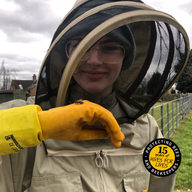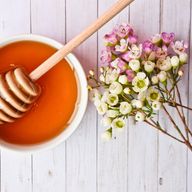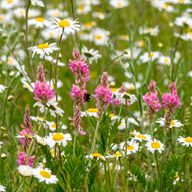
Spring and summer are busy times of the year for nature. Flowers are blooming, some animals are coming out of hibernation, other animals are hatching, and there is frenetic activity going on around a beehive. This is the time that you’re most likely to see a lot of our tiny buzzing friends searching for nectar and pollen, and possibly swarming too. In fact, Google searches for ‘bee swarms’ are rising — proof that many of us are spotting colonies on the move!
A honey bee colony is a fascinating force of nature. These intelligent creatures rely on their incredible instinct to support the whole colony – from sourcing nectar and making honey to finding a new nesting spot. A colony can grow to around 60,000 bees in summer (that’s one full hive), and the natural phenomenon of swarming marks their pilgrimage to a new nesting place to grow in. They can occur at any time in spring and summer and generally happen due to the size of the hive, the age of the queen, the availability of food sources and the heat of the season.
Despite being so tiny, they’re actually incredibly powerful. They pollinate two thirds of all the fruit and veg we eat, meaning without them, we wouldn’t have so much of our natural, healthy food… and we can’t forget that they give us our delicious amber nectar (honey of course) too! Plus, a little-known fact is that bee keeping also offers a sustainable pathway out of poverty for many struggling communities abroad. Fascinating right?
For this reason, we are passionately spearheading positive change for the bees through Hives for Lives — a program of vital initiatives that protects the bees and improves livelihoods through beekeeping. Together with our partners, we’re spotlighting the critical role bees play, from maintaining biodiversity to food production. And in turn, the vital role we can all play in saving these important pollinators.
So… what do you need to know if you see a swarm of bees? And, what do you do?
- Don’t expect to see all 60,000 on the move! The current queen will usually take around 75% of the hive – which can be up to 45,000 bees. These are mostly older worker bees, and they find a new place to call their own, leaving behind lots of young bees and larvae, including ‘queen cells’ containing newly developing queens.
- When you see a bee swarm clinging to a spot, like a tree, they’re only borrowing this space as a resting spot for a little while before finding a new home. In fact, while they’re resting, they have specially selected scout bees out looking for a new place to settle down in.
- The scout bees search for a safe space large enough to house ‘Her Royal Hive-ness’, the queen, and her buzzing followers. Such cavities are hard to find. In nature, this might be a hollow tree; however, these are sadly few and far between which is where beekeepers and bee farmers step in to help. Some bee farmers actually put out bait hives to provide new homes for swarms and many amateur bee associations will collect swarms.
- Though it can be quite daunting to see honey bees in their large numbers, they are usually at their most docile when swarming. This is because they are focusing on the task at hand and they’ve gorged on honey before leaving the hive, so have extremely full stomachs – think of our version of a food coma! Even so, we don’t suggest getting too close to them, so please be cautious.
- We have 450 amazing bee farmers in the UK, and though swarms are a natural occurrence, bee farmers actually try to help the bees out so they don’t have to swarm. As they check on them weekly during the main season, they will be able to spot when a hive is becoming too overcrowded and can move the old queen, and her loyal followers, to a new hive.
- If you see a swarm, be cautious and get in touch with your local bee keeping association to let them know what you’ve spotted. They usually have a dedicated swarm collector and will often come and move them somewhere safe – after all, we need to do all we can to make sure our little pollinating friends are looked after.
- Swarming is actually a really positive sign that our honey bee population is healthy and reproducing!



